As we bid farewell to 2023 and eagerly anticipate the arrival of 2024, the social media landscape is poised for significant transformations. The upcoming year promises a wave of innovations and updates that will reshape digital marketing strategies. In this article, we delve into the forecasted social media trends for 2024, providing insights and strategies to help marketers and businesses stay ahead in this dynamic environment.
1. Video Content Domination: The Unrivaled Reign of Video
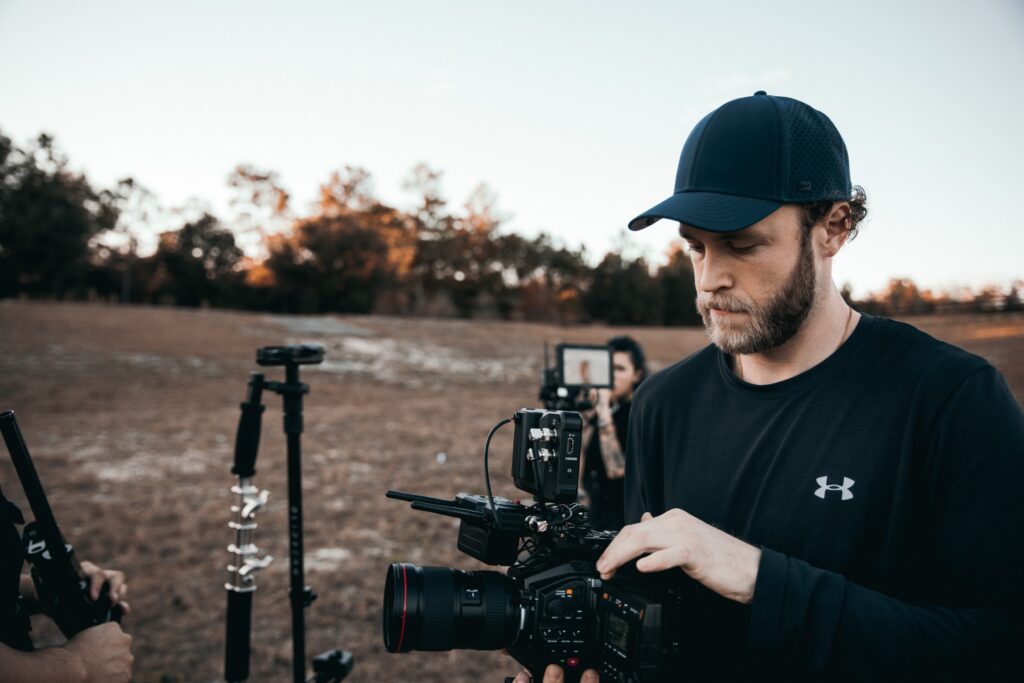
In the fast-paced landscape of social media, one trend stands tall as the unrivaled king of engagement: Video Content Domination. As we gaze into the crystal ball of 2024, it’s clear that the reign of video is not just continuing; it’s evolving into a force that will shape the digital narrative like never before.
The Rise of Video as a Dominant Force: The statistics paint a compelling picture. According to a study by Wyzowl, individuals are currently consuming an average of 17 hours of online video content per week, and the forecast for 2024 suggests this number will soar even higher. This isn’t merely a trend; it’s a seismic shift in how audiences prefer to consume information and entertainment.
ROI Royalty: Marketers are singing praises for video content, and for good reason. A whopping 92% of them acknowledge that video provides one of the highest Returns on Investment (ROIs) among various media formats. From the bite-sized allure of Instagram Reels to the in-depth explorations on YouTube, video content is the versatile maestro conducting the symphony of brand engagement.
The Social Dynamics of Video: Social media platforms are doubling down on video features. Instagram, the visual storytelling haven, has witnessed the meteoric rise of short video formats through Reels, while TikTok’s explosive popularity attests to the magnetic draw of quick, engaging videos. Platforms like Facebook and Twitter are not lagging behind either, enhancing their video capabilities to stay ahead in the game.
Brands Riding the Video Wave: In this video-centric era, brands that fail to harness the power of visual storytelling risk being left in the shadows. From behind-the-scenes glimpses to product tutorials, video content allows brands to connect with their audience on a more personal level. It’s not just about showcasing a product; it’s about telling a story, creating an emotional resonance, and inviting the audience to be part of the narrative.
The Evolution of Live Video: Live video is emerging as a potent tool for real-time engagement. Whether it’s a live product launch, a Q&A session, or a behind-the-scenes tour, brands are leveraging the immediacy and interactivity of live video to forge deeper connections. Platforms like Instagram, Facebook, and YouTube offer live features that amplify the sense of authenticity and transparency.
Educational and Informative Content: Beyond entertainment, video content is becoming a primary source of education and information. From tutorials and how-to guides to educational series, users are turning to videos to acquire knowledge. The visual format simplifies complex concepts, making learning more accessible and engaging.
The Predictive Horizon: As we look ahead to 2024, the predictive horizon is clear – video content is not just a trend; it’s a transformative force shaping the future of digital communication. Brands and content creators that understand the nuances of this medium and adapt to its evolving facets will not only stay relevant but will thrive in the ever-evolving landscape of social media.
Strategies for Brands in 2024: For brands gearing up for the video-dominated future, a strategic approach is paramount. From embracing short-form content on platforms like TikTok and Instagram Reels to investing in high-quality, long-form videos for YouTube, the key lies in diversification. Brands should also leverage the power of live videos for real-time engagement and consider incorporating interactive elements to enhance viewer participation.
Conclusion: In the symphony of social media trends, the crescendo of Video Content Domination is unmistakable. As we venture into 2024, brands and content creators must not merely follow this trend but orchestrate their narratives through the dynamic, engaging, and visually compelling medium of video. It’s not just content; it’s a cinematic experience that will continue to captivate and dominate the digital landscape. So, fasten your seatbelts, hit record, and let the video era unfold its mesmerizing tale.
Example: Tasty, a brand renowned for its engaging recipe videos on various social media platforms, exemplifies the success achievable through captivating video content.
2. Ephemeral Content Continuance: The Allure of Fleeting Moments Persists

In the ever-evolving tapestry of social media trends, 2024 heralds the enduring allure of Ephemeral Content Continuance, proving that fleeting moments wield an irresistible charm that refuses to fade. This trend, which found its roots in Snapchat and matured into the Stories feature on Instagram, is poised to persist as a potent force in the digital storytelling landscape.
Why the persistence of ephemeral content? It’s simple – authenticity and FOMO (Fear of Missing Out). As users, we crave real, unscripted glimpses into the lives of others, and ephemeral content encapsulates this authenticity. The knowledge that these moments will vanish after 24 hours creates a sense of urgency, driving user engagement to unprecedented heights.
The numbers speak for themselves: post-Instagram Stories viewing, 62% of users express heightened interest in a brand or product. This phenomenon is more than a trend; it’s a testament to the magnetic power of evanescent narratives. So, as we step into 2024, let’s celebrate the beauty of impermanence in the digital realm – where moments are fleeting, but the impact on your audience is anything but transient. Get ready to tell your story in 24-hour snippets, where each moment is a brushstroke in the masterpiece of your digital narrative.
Example: Fashion brands like Zara leverage Instagram Stories to showcase behind-the-scenes glimpses of their design process, creating anticipation among followers.
3. Integration of Shopping and Social Media: Social Commerce’s Ascension

Social commerce emerges as the new frontier in 2024. Platforms such as Instagram and Pinterest seamlessly integrate shopping features, offering consumers a convenient way to make purchases directly through social media. With 83% of shoppers turning to Instagram for product discovery, the fusion of social media and e-commerce is a trend set to endure. Leading brands like Adidas, Glossier, and H&M showcase products on social platforms, providing a seamless shopping experience within users’ favorite apps.
Example: Glossier’s Instagram Shop transforms the platform into a virtual storefront, allowing users to browse and purchase products without leaving the app.
4. Enhanced Hyper-Personalization: Tailoring Content to Individual Tastes

Hyper-personalization takes center stage in 2024, propelled by advancements in AI and machine learning. Users now expect content tailored specifically to their preferences, and brands are responding to this demand. Based on Deloitte data, 90% of customers find personalized advertising appealing, increasing the likelihood of making a purchase. Leading brands like Spotify, Netflix, and Amazon leverage hyper-personalization to deliver tailored content, recommendations, and shopping suggestions.
Buckle up, social aficionados! As we hurtle into 2024, a trend is emerging that promises to make your social media experience more personalized than ever – Enhanced Hyper-Personalization. It’s not just a mouthful; it’s the secret sauce that’s about to make your scrolling sessions feel like a curated journey designed exclusively for you.
Picture this: a world where your social media feed is a personalized haven, showcasing content tailored precisely to your tastes and preferences. The magic behind this lies in the advancements of AI and machine learning, creating a dynamic landscape where your every click, like, and share contributes to a finely tuned algorithm, dedicated to delivering content that resonates with you on a personal level.
In 2024, get ready to be serenaded by content that speaks your language, anticipates your interests, and virtually high-fives your individuality. It’s not just about personalization; it’s about hyper-personalization – an era where your digital spaces become an extension of your personality.
So, dear social butterflies, as we step into the future, embrace the era of Enhanced Hyper-Personalization. Your social media isn’t just a feed; it’s your digital alter ego, a reflection of your unique tastes and a testament to a world where personalization isn’t just a feature; it’s the main event. Get ready to scroll, engage, and revel in a social media experience that’s uniquely, unmistakably, and unapologetically you. Welcome to the personalized party – the hottest trend of 2024!
Example: Spotify’s personalized playlists curate music based on user preferences, enhancing the listening experience and fostering brand loyalty.
5. LinkedIn Will Be the Prime Social Media Channel for B2B: Shifting Focus to LinkedIn
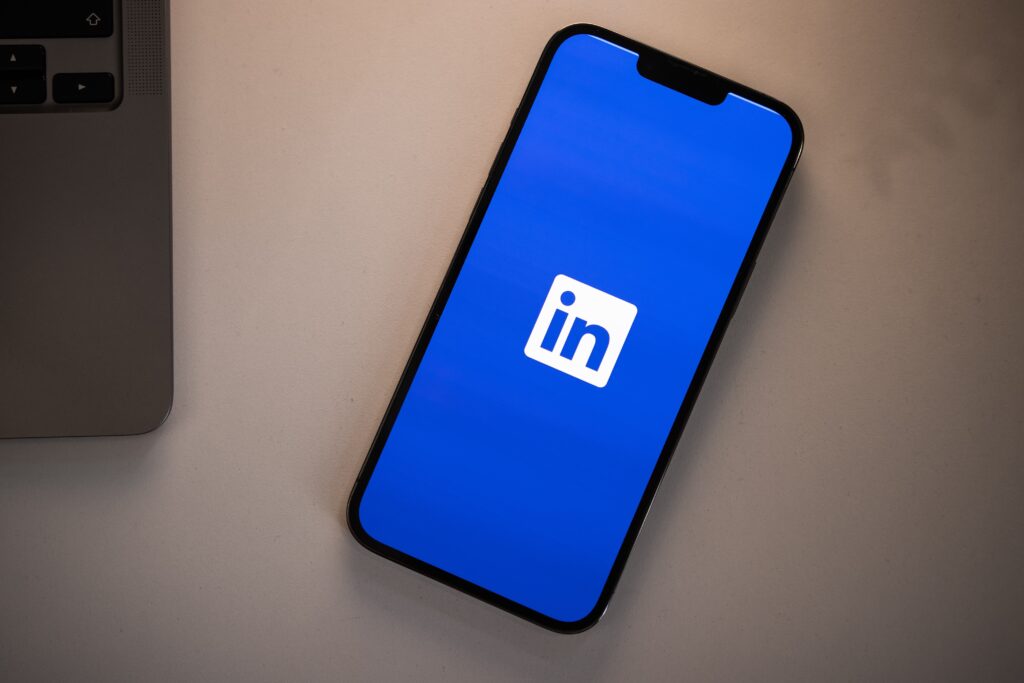
2024 ushers in a pivotal shift in B2B marketing dynamics as LinkedIn emerges as the unrivaled champion among social media channels. Evolving beyond its roots as a professional networking platform, LinkedIn stands tall as the epicenter for B2B interactions, promising a landscape rich in opportunities for strategic engagements.
This transformation is not merely a quantitative surge but a qualitative pivot, with 65% of B2B marketers actively steering their focus towards LinkedIn. The platform’s unique blend of professionalism and industry-specific content propels it beyond conventional social networks, offering a specialized arena for in-depth business interactions.
LinkedIn’s allure lies in its capacity to transcend the typical boundaries of social media, providing a space where B2B relationships flourish. It goes beyond being a platform; it is an ecosystem where products, services, and solutions are presented with a laser focus on addressing industry challenges. This strategic redirection from generalized social platforms to the specialized realm of LinkedIn signifies a calculated move towards precision, where connections are not just made but optimized for strategic, professional impact.
As 2024 unfolds, brands attuned to the B2B potential of LinkedIn are not merely adapting to a trend; they are positioning themselves at the forefront of a dynamic landscape where business relationships are forged with precision, depth, and a distinctly professional flair.
Example: A software development company may leverage LinkedIn to share case studies and success stories, demonstrating the practical application of their solutions.
6. Rising Role of Micro and Nano Influencers: The Era of Authentic Influence
The evolving social media landscape in 2024 foresees a significant shift in the influencer marketing paradigm, emphasizing the rising role of micro and nano influencers. This marks the dawn of the era of authentic influence, where niche content creators with smaller follower counts wield considerable impact.
While celebrity endorsements have traditionally held sway, the trend is shifting towards micro influencers (10k-50k followers) and nano influencers (below 10k followers). The appeal lies in their niche audiences, genuine engagement, and heightened trust levels. A Linqia study revealed that 90% of marketers express a preference for micro-influencers, citing their superior engagement compared to larger influencers.
The forecast for 2024 underscores the enduring influence of these smaller-scale influencers. Their authenticity, relatability, and ability to connect with their audience on a personal level set them apart. As consumers increasingly value genuine connections over mass appeal, micro and nano influencers emerge as powerful brand allies capable of fostering authentic relationships. Brands aligning with this trend can anticipate heightened engagement, brand loyalty, and a more organic approach to influencer marketing in the coming years.
Example: A local coffee brand may collaborate with a micro-influencer who has a dedicated following interested in coffee culture, resulting in authentic and relatable content.
7. Hybrid Content: Fusion of AI and Human Creativity
The forecast for social media trends in 2024 introduces an exciting evolution in content creation known as “Hybrid Content,” representing a seamless fusion of artificial intelligence (AI) and human creativity. This trend is poised to redefine the landscape of content generation, offering a harmonious blend of efficiency, personalization, and authenticity.
Hybrid content leverages AI’s capabilities to assist in content creation, spanning text, images, videos, and more. A study by Botco.ai revealed that 73% of B2B and B2C marketing executives are already utilizing generative AI to produce diverse content types. This approach brings unparalleled advantages, including faster content production, tailored personalization, and consistent quality.
The synergy between AI’s scalability and human refinement ensures that brands can efficiently connect with their audiences, striking a balance between automation and the authentic touch of human creativity. This trend signifies a shift toward content creation that is not only efficient but also resonates on a deeper level with consumers.
As we march towards 2024, the era of hybrid content heralds a new paradigm where brands harness the power of AI to augment their creative endeavors, resulting in compelling, personalized, and consistently high-quality content that captivates audiences in an ever-evolving digital landscape.
Example: A clothing brand may employ hybrid content to dynamically generate personalized outfit suggestions for users based on their style preferences.
8. Social Media Automation: Streamlining Processes for Efficiency
As we peer into the future of social media trends for 2024, the role of automation stands out as a critical component for streamlining processes and enhancing overall efficiency. Social media automation is set to become an indispensable tool for brands seeking to navigate the ever-expanding digital landscape with finesse.
In the coming years, the adoption of social media automation tools is projected to surge as businesses recognize the need for optimizing their strategies. A study by Ascend2 in 2023 revealed that 50% of brands have already embraced marketing automation tools for social media management, marking a 6% increase from the previous year. This growth trajectory is expected to persist, driven by the desire to reduce costs, ensure consistent posting schedules, and enable brands to concentrate on higher-level strategic planning and content creation.
Automation streamlines various aspects of social media management, from crafting engaging captions to scheduling posts at optimal times. The real-time tracking of engagement metrics and the ability to analyze performance data contribute to a data-driven approach, allowing brands to refine their strategies based on actionable insights. In the forecast for 2024, social media automation emerges not just as a time-saving tool but as a strategic ally for brands aiming to maintain a consistent, impactful online presence.
Example: Social media scheduling tools like Buffer and Hootsuite allow brands to plan and automate posts, ensuring a consistent and strategic social media presence.
9. Authenticity Will Take Center Stage: The Craving for Genuine Connections
Users are fatigued by inauthentic brand messaging and are now seeking real, transparent interactions. Brands that prioritize authenticity, acknowledge mistakes, and communicate genuinely will foster greater loyalty. A Stackla survey indicates that 88% of consumers prioritize authenticity when choosing brands to support. In 2024, brands are encouraged to showcase behind-the-scenes looks, candid moments, and even acknowledge imperfections or mistakes to build genuine connections with their audience.
Example: A beauty brand may share unfiltered behind-the-scenes footage of their product development process, showcasing the authenticity of their commitment to quality.
10. User-Generated Content Will Increase: Harnessing the Power of User Creativity
User-Generated Content (UGC) takes the spotlight as the future of content marketing. Genuine, community-building, and cost-effective, UGC transforms passive viewers into active participants and advocates. Brands like LEGO, Starbucks, and GoPro excel in leveraging UGC through campaigns, contests, and community engagement. By turning customers into content creators, these brands amplify brand loyalty and create a dynamic brand-consumer relationship.
The ascent of user-generated content (UGC) continues to be a defining trend in the social media landscape, underscoring the power of harnessing user creativity for brand engagement. UGC, characterized by content created by consumers rather than brands, offers a dynamic avenue for authentic storytelling and community building.
Brands are increasingly recognizing the value of UGC as it not only amplifies their reach but also fosters a sense of community around their products or services. Platforms like LEGO, Starbucks, and GoPro have masterfully leveraged UGC by turning their customers into content creators through campaigns, contests, and community engagement initiatives.
The effectiveness of UGC lies in its authenticity and the genuine enthusiasm of users sharing their experiences. It not only serves as a form of social proof but also transforms passive viewers into active participants and advocates. As consumers seek more relatable and authentic brand interactions, UGC emerges as a potent tool for brands to tap into the creativity of their user base, building a collaborative narrative that resonates with a broader audience.
In the forecast for 2024, the trajectory indicates a continued rise in the prevalence of user-generated content. Brands that skillfully encourage and curate UGC stand to benefit from the organic, community-driven narratives that unfold, creating a symbiotic relationship where users become integral contributors to a brand’s storytelling journey.
Example: LEGO encourages users to share their creative builds on social media using a branded hashtag, creating a vibrant community of LEGO enthusiasts.
11. The Resurgence of Authenticity in Content: Real, Unfiltered, Genuine
n the ever-evolving landscape of digital content, there’s a notable resurgence of authenticity as a key driver of audience engagement. Audiences today, fatigued by overly curated and filtered content, crave genuine, unfiltered experiences. This shift is evident in the popularity of platforms like TikTok and the rising BeReal platform, emphasizing the need for real-time, relatable content that eschews the veneer of perfection.
Authenticity has become a decisive factor in determining the success of social media platforms. Users are drawn to content that feels raw, unscripted, and relatable, reflecting the diverse realities of everyday life. This trend challenges the traditional norms of polished visuals and scripted narratives, giving way to a more authentic, humanized representation of brands and individuals.
The success stories of influencers who embrace authenticity over polished perfection underscore this shift. Audiences respond positively to behind-the-scenes looks, candid moments, and acknowledgments of imperfections. In a Stackla survey, 88% of consumers expressed a preference for authentic brands, indicating that the modern consumer values transparency and realness in their digital interactions.
As brands and content creators adapt to this resurgence of authenticity, the digital landscape is witnessing a transformation where real, unfiltered content stands out and forges deeper connections with audiences. In the pursuit of genuine engagement, the authenticity trend is reshaping the content creation paradigm, ushering in an era where imperfections are celebrated, and real stories resonate the loudest.
Example: BeReal, dedicated to authentic and unfiltered content, has garnered popularity by providing users with a space for genuine expression, resonating with those seeking authenticity in their digital experiences.
12. Short Video & TikTok: The Proliferation of Short-Form Engaging Content
The meteoric rise of short-form video content, epitomized by platforms like TikTok, has revolutionized the way audiences consume and engage with digital media. With TikTok boasting an impressive 1.4 billion monthly active users, short videos have become a dominant force in shaping online narratives.
The popularity of short-form videos can be attributed to their brevity, accessibility, and the ease with which they capture attention. Gen Z, in particular, has embraced this format, with its shorter attention spans and a preference for quick, dynamic content. The success of TikTok has spurred other social media giants, such as Instagram, to introduce features like Reels, acknowledging the growing significance of short videos.
From humorous skits to educational content, short-form videos provide a versatile canvas for creative expression. Influencers and brands leverage this format to convey messages concisely, ensuring that they resonate with audiences in a time-efficient manner.
As attention spans continue to shrink, the proliferation of short-form engaging content is set to persist. Brands that master the art of crafting impactful, succinct narratives on platforms like TikTok tap into a goldmine of audience engagement, creating memorable interactions that align with the evolving dynamics of online content consumption.
Example: Instagram Reels, Instagram’s response to the short-form video trend, has witnessed increased popularity, particularly among younger demographics, highlighting the appeal of bite-sized content.
13. Micro Influencers and Their Effectiveness: Niche Influence for Enhanced Engagement
While influencer marketing remains pivotal, the spotlight shifts to micro influencers. These influencers, with smaller but highly engaged audiences, offer cost-effective collaboration opportunities for brands. Leveraging multiple micro influencers within a specific niche can yield better returns on investment and foster more genuine connections.
In the realm of influencer marketing, the spotlight is increasingly shifting towards micro-influencers, heralding a departure from the era of macro influencers. With follower counts ranging from 10,000 to 50,000, micro-influencers bring a more intimate and niche approach to brand promotion, proving to be highly effective in driving engagement.
What sets micro-influencers apart is their specialized focus on specific industries or interests, cultivating a dedicated and trusting audience. Studies indicate that 90% of marketers are inclined to collaborate with micro-influencers due to their authentic engagement levels, which often surpass those of their macro counterparts.
The effectiveness of micro-influencers lies in their ability to connect with their audience on a more personal level. Their recommendations and endorsements carry a genuine touch, fostering a sense of trust that resonates with their niche community. As consumers increasingly seek authenticity in their digital interactions, micro-influencers emerge as relatable figures who wield significant influence within their specialized domains.
In the evolving landscape of influencer marketing, the shift towards micro-influencers represents a strategic move for brands seeking to build genuine connections and enhance engagement. The era of personalized, niche influence is here, and micro-influencers are proving to be powerful allies for brands aiming to foster authentic relationships with their target audience.
Example: A local fitness brand may collaborate with micro influencers in the health and wellness space, ensuring that their message reaches a targeted and engaged audience.
14. Social Commerce on the Rise: Seamless Shopping Within Social Platforms
Social commerce is experiencing an unprecedented surge, transforming social media platforms into seamless shopping destinations. As consumers increasingly turn to online channels for product discovery and purchasing, social media giants like Instagram and Facebook have seamlessly integrated shopping features, ushering in a new era of e-commerce convenience.
With a staggering 83% of shoppers relying on Instagram for product discovery, the amalgamation of social media and e-commerce has become a dominant trend. This integration eliminates the need for users to navigate away from their favorite platforms, streamlining the shopping experience and fostering impulse buying.
Leading brands such as Adidas, Glossier, and H&M have capitalized on this trend by curating captivating product showcases directly on Instagram and Facebook. By blurring the lines between social engagement and commerce, these brands provide consumers with a frictionless shopping journey within the familiar landscapes of their social feeds.
Social commerce not only enhances user convenience but also empowers brands to showcase products in an engaging and interactive manner. As platforms continue to refine their shopping functionalities, social commerce is poised to redefine the retail landscape, offering a potent blend of community engagement and seamless transactions within the realms of social media. In the evolving paradigm of digital consumerism, social commerce stands as a testament to the symbiotic relationship between social interaction and online shopping.
Example: Facebook Shop and Instagram Storefront provide users with a seamless shopping experience directly within the social media apps, demonstrating the integration of commerce and social interaction.
15. Social Networks for Customer Service: Beyond Communication Channels
Social media platforms evolve beyond mere communication channels to become integral for customer service. Brands leverage features like common inboxes, automated responses, and chatbots on platforms like Facebook for efficient and real-time customer support.
In the contemporary landscape of digital interaction, social networks have transcended their initial role as communication channels and evolved into dynamic platforms for customer service. Beyond serving as spaces for brand announcements and promotional content, social networks have become vital hubs for direct customer engagement and issue resolution.
The versatility of social networks allows brands to establish a direct line of communication with their customers, offering real-time support and assistance. Whether it’s responding to queries, addressing concerns, or providing timely updates, social networks provide an immediate and accessible avenue for brands to connect with their audience.
Example: Brands actively respond to customer mentions and comments on Twitter, showcasing a commitment to addressing customer concerns and building a positive brand image.
16. Personalized Ads on Social Media: Tailoring Messages for Impact
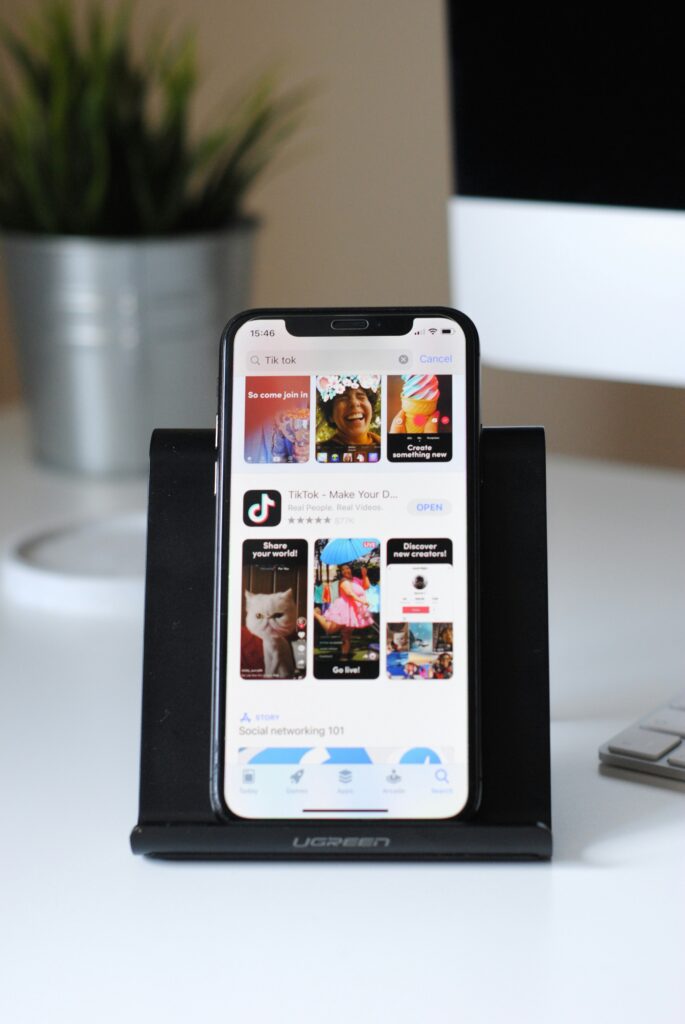
Paid advertising continues to grow, with a spotlight on personalized ads. Social media channels like Instagram witness increased ad spending due to their effectiveness in reaching business goals. Marketers leverage social proof and user-generated content to enhance ad visibility and engagement.
Personalized ads on social media represent a pivotal shift in the digital marketing landscape, as brands increasingly recognize the power of tailored messages to captivate their audience. In an era inundated with content, the ability to deliver personalized ads resonates profoundly with consumers, cutting through the noise and forging a more intimate connection.
In the evolving landscape of social media marketing, personalized ads stand as a testament to the era of individualized communication. Brands that adeptly harness the potential of personalized messaging on social platforms not only elevate their marketing strategies but also foster a deeper, more meaningful connection with their audience. As the digital sphere continues to prioritize personalization, the impact of tailored messages on social media is poised to reshape the dynamics of advertising.
Example: An e-commerce brand may use personalized ads on Instagram, featuring user-generated content and testimonials to build trust and drive conversions.
17. Social Listening & Brand Involvement: Staying Attuned to Audience Conversations

In the ever-evolving landscape of social media, where conversations unfold at a rapid pace, brands are embracing a powerful tool known as social listening to not just be part of the dialogue but to actively shape it. Social listening transcends the traditional realms of marketing, offering brands an invaluable opportunity to understand, connect, and engage with their audience on a deeper level.
Social listening becomes essential for brands to stay attuned to conversations and engage with their audience effectively. Monitoring brand mentions, competitor activities, and emerging trends allows brands to proactively participate in discussions and enhance their social strategy.
Example: Tools like Determ enable brands to monitor mentions of their brand, providing insights into customer sentiments and facilitating proactive engagement.
18. Tight-Knit Communities: The Pursuit of Meaningful Interactions
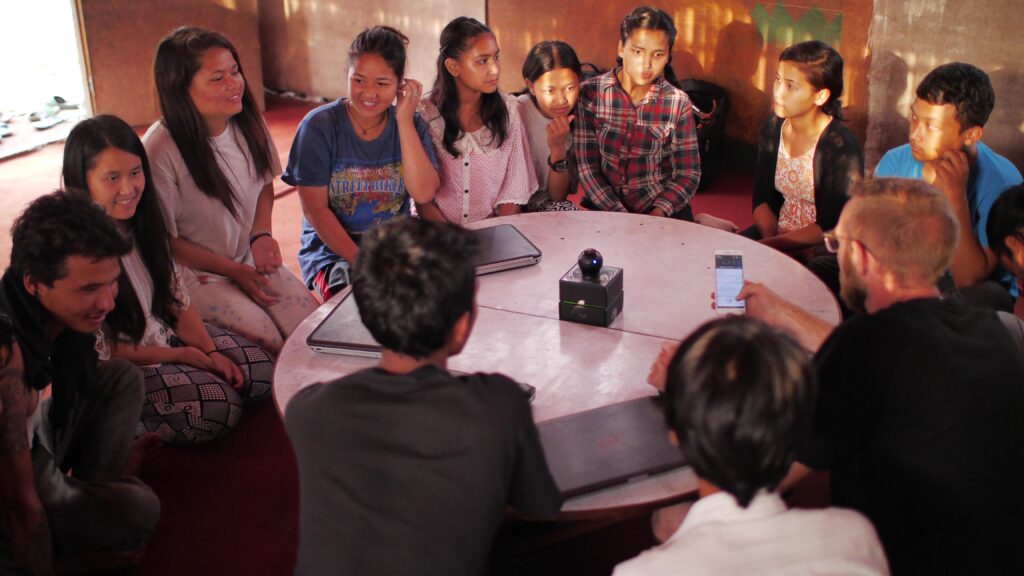
The influx of users on social media prompts a desire for smaller, tight-knit communities. Micro-communities with like-minded individuals offer higher engagement rates. Brands leverage platforms like Facebook Groups to build communities around their products, fostering meaningful interactions.
Example: A sustainable living brand may create a Facebook Group for eco-conscious consumers to share tips, engage in discussions, and build a community around shared values.
19. Rise of Social Justice and Brand Involvement: Taking a Stand on Social Issues

More brands actively engage in public discourse on social justice, political, and environmental issues. Social media becomes a platform for brands to showcase their stance on important topics. With over half of social media users supporting business activism, brands are expected to take a more pronounced stand.
Example: Nike’s campaigns addressing social justice issues on social media have not only garnered positive responses but also contributed to increased sales, showcasing the impact of aligning with social causes.
20. Connecting Social Media and Email Marketing: Bridging the Digital Marketing Gap

The lines between digital marketing channels blur as marketers seek a seamless integration of social media and email marketing. Multichannel approaches aim to provide users with a complete brand experience. Combining social media’s focus on brand awareness with email marketing’s emphasis on conversion creates a powerful marketing strategy.
Example: A brand may run a giveaway on social media, encouraging users to subscribe to their email newsletter for a chance to win, effectively bridging the gap between social media engagement and email conversion.
21. Augmented Reality: Enhancing Visual Content and Shopping Experiences

Augmented reality (AR) effects, popularized by digital filters on social media, continue to captivate users. AR enhances visual content, making it stand out. Platforms like Facebook and Instagram leverage AR to improve social shopping experiences. As social commerce grows, AR’s potential for enhancing the buyer-consumer interaction becomes more significant.
Example: Brands may use AR filters on Instagram to allow users to virtually try on products, enhancing the online shopping experience and increasing engagement.
22. Virtual Reality: Immersive Experiences Beyond Gaming
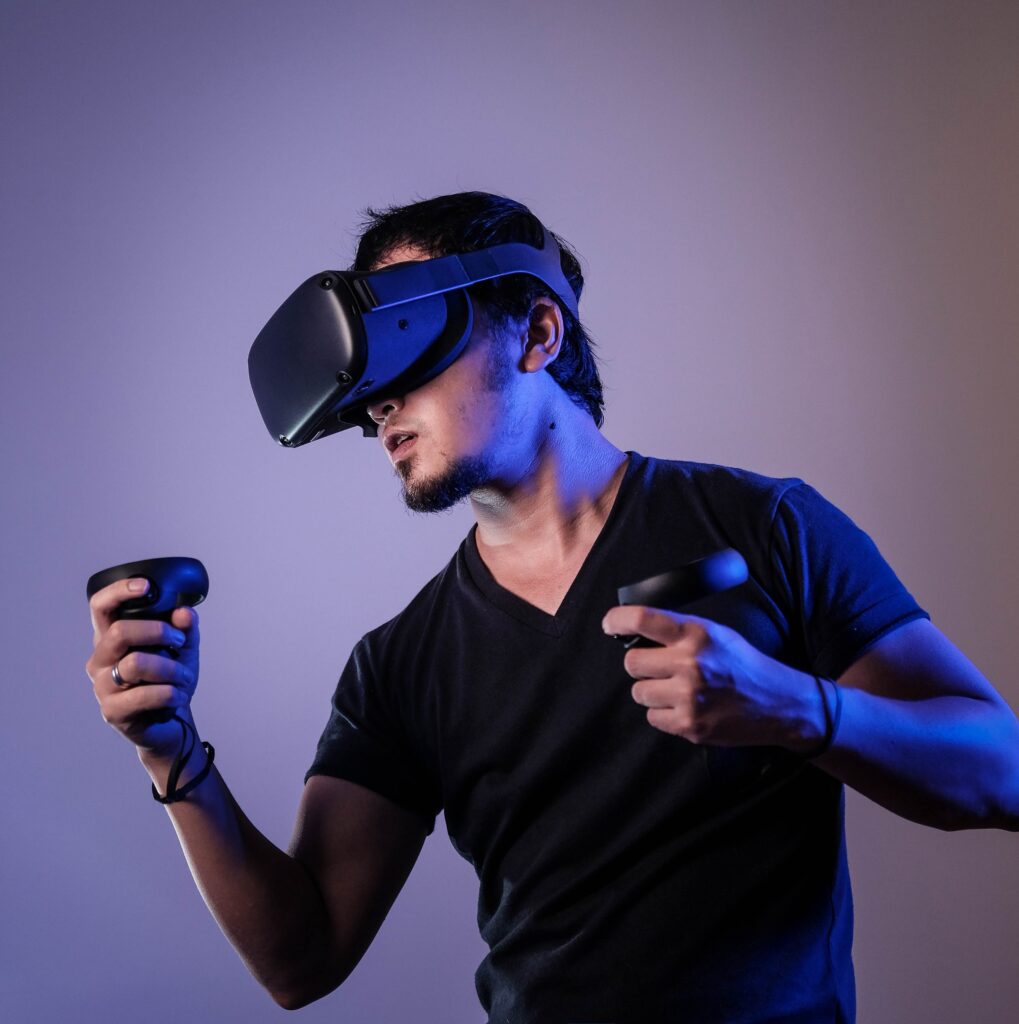
While virtual reality (VR) adoption is slower than AR, it holds significant potential. VR’s immersive interaction is expected to gain momentum, especially with the backing of platforms like Facebook. VR’s application extends beyond gaming, with platforms like YouTube experimenting with VR experiences. As the audience for VR grows, businesses are likely to explore its potential for showcasing products in 3D and revolutionizing the shopping experience.
Example: A real estate company may use VR to offer virtual property tours, allowing potential buyers to explore homes from the comfort of their own spaces.
Market Forecast: Charting the Growth Trajectory
Ad spending in the social media advertising market is expected to show an annual growth rate of 4.31%, reaching a projected market volume of US$255.8 billion by 2028. Mobile advertising will contribute significantly, with US$255.8 billion of total ad spending generated through mobile in 2028. The number of users in the social media advertising market is anticipated to reach 6,054.0 million users by 2028.
In conclusion, 2024’s social media landscape promises to be dynamic, user-centric, and more integrated than ever. Staying updated with these trends is not just recommended; it is vital for brands and marketers aiming to engage, convert, and build genuine relationships with their audience. Embrace the change, and let’s make 2024 the most socially engaging year yet!
At Placid Technologies, we understand that the future of social media is dynamic and ever-evolving. As we anticipate the trends shaping 2024, our approach to social media solutions is meticulously aligned with these forecasts. From immersive metaverse experiences to cultivating micro-communities on niche platforms, we envision a social media landscape where authentic engagement and user-centricity take center stage. Our social media services extend beyond conventional practices, delving into the realms of privacy-centric features, ethical AI integration, and the rise of audio-first platforms. By leveraging gamified content, interactive storytelling, and cross-platform integration, we aim to provide our clients with a comprehensive and forward-thinking approach to social media marketing. Placid Technologies is your social media partner agency in navigating the future of social media, ensuring that your brand not only stays relevant but thrives in an environment defined by innovation, responsibility, and meaningful connections. Let’s embark on this journey together, elevating your brand to new heights in the social media landscape of 2024 and beyond.

